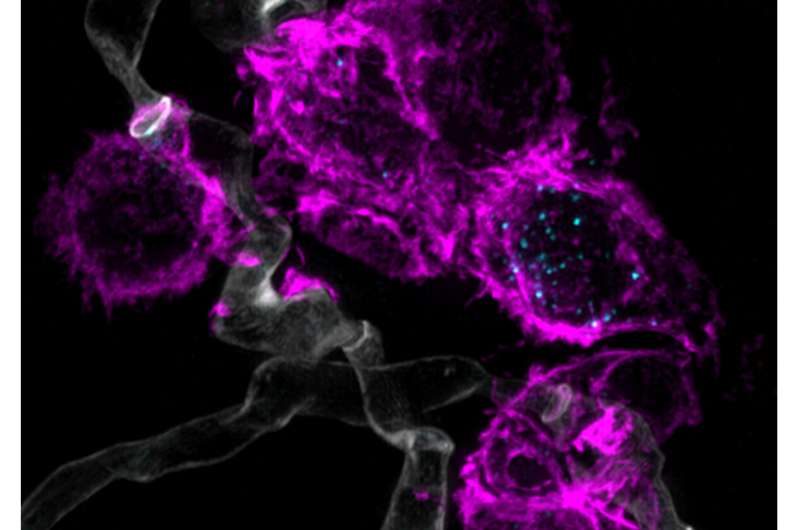Home » Health News »
Modifying CAR T cell engineering technique to fight fungal lung infections

An international team of researchers has developed a way to modify the CAR T engineering process to create cells that can assist in fighting fungal infections in the lungs. In their paper published in the journal Science Translational Medicine, the group describes modifying the CAR T engineering process.
Chimeric antigen receptor (CAR) T cells are genetically engineered to attach to cancer cell antigens, helping the body to eliminate tumors. CAR T cells are engineered by harvesting T cells from a patient and then adding a gene receptor. Then, the CAR T cells are injected back into the same patient. CAR T cells have traditionally been engineered to fight cancer, but in this new effort, the researchers adapted the process to create CAR T cells that go after Aspergillus fumigatus—a type of fungus that can lead to infections in immunocompromised patients or those undergoing chemotherapy, resulting in invasive pulmonary aspergillosis. More recently, researchers have found that people with COVID-19 infections are also more susceptible to such lung infections.
The work closely mimicked the process used to create cancer-fighting CAR T cells. But instead of adding a gene receptor that targets cancer cell antigens, they added one that targets the cell wall of A. fumigatus.
https://youtube.com/watch?v=G42pzPN45BA%3Fcolor%3Dwhite
The researchers tested their newly engineered cells first in a petri dish and found that they were able to recognize multiple strains of A. fumigatus. They also found that their CAR T cells were able to impede fungal growth by allowing proteins and granzyme B to escape from inside of individual fungi, thereby killing them. The researchers then tested their cells on lab mice. They found that the CAR T cells moved directly to infection sites, and in attaching to fungi, lowered fungal numbers, which in turn helped the immune system remove the infection.
Source: Read Full Article


